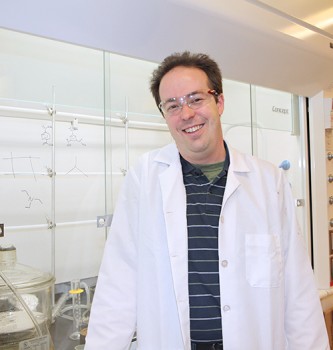Postdoctoral Research Associate
Northwestern University - 2012

Professional Preparation
Ph.D.
University of Illinois, Urbana-Champaign - 2008
University of Illinois, Urbana-Champaign - 2008
B.S.
University of Michigan, Ann Arbor - 2003
University of Michigan, Ann Arbor - 2003
Awards
Doctoral New Investigator - American Chemical Society [2013]
News Articles
Holes in Prof's Special Polymers Are Filled With Possibilities
 When Dr. Ronald Smaldone joined the UT Dallas faculty last fall, he brought with him an ace in the hole – research expertise centered on novel, porous materials that have wide-ranging potential applications, from batteries to drug delivery to energy storage. The materials Smaldone is developing are nanoporous polymers. In bulk they appear crystalline or powder-like, but a microscope reveals tiny openings where small molecules can enter and become trapped and released, just as water molecules get trapped in a sponge. The polymers may be full of holes, Smaldone said, but that chemically engineered nanoporosity is a very useful property. Such materials have extremely high surface areas, up to 1,200 square meters in a teaspoonful. All those tiny nooks and crannies can store catalytic chemicals, form the basis of a new generation of batteries, or store energy-rich gasses such as hydrogen and methane.
When Dr. Ronald Smaldone joined the UT Dallas faculty last fall, he brought with him an ace in the hole – research expertise centered on novel, porous materials that have wide-ranging potential applications, from batteries to drug delivery to energy storage. The materials Smaldone is developing are nanoporous polymers. In bulk they appear crystalline or powder-like, but a microscope reveals tiny openings where small molecules can enter and become trapped and released, just as water molecules get trapped in a sponge. The polymers may be full of holes, Smaldone said, but that chemically engineered nanoporosity is a very useful property. Such materials have extremely high surface areas, up to 1,200 square meters in a teaspoonful. All those tiny nooks and crannies can store catalytic chemicals, form the basis of a new generation of batteries, or store energy-rich gasses such as hydrogen and methane.